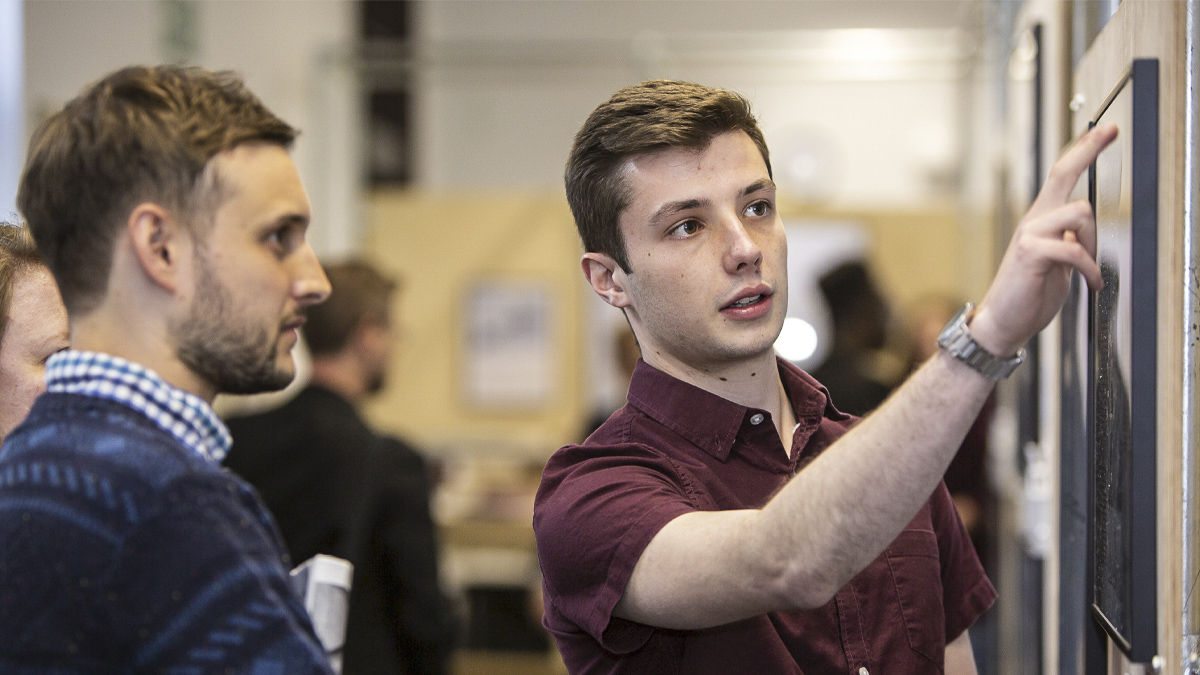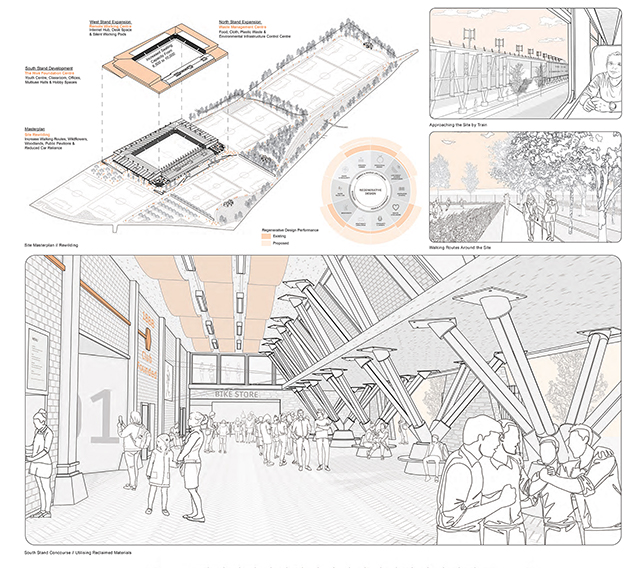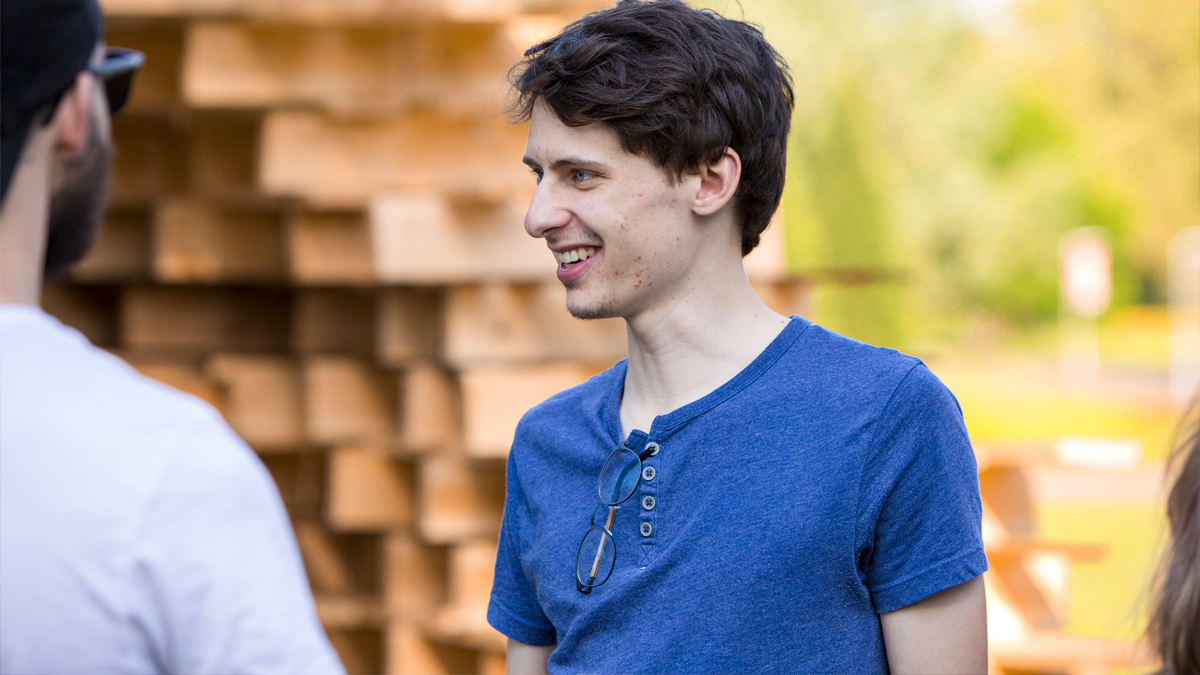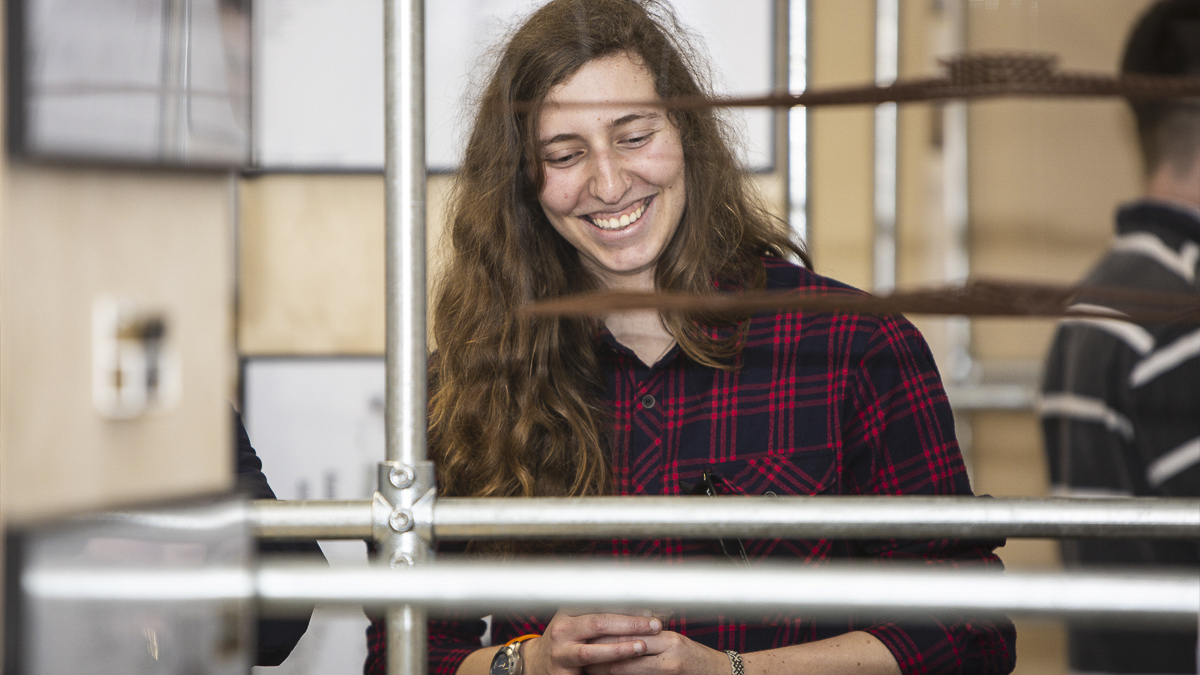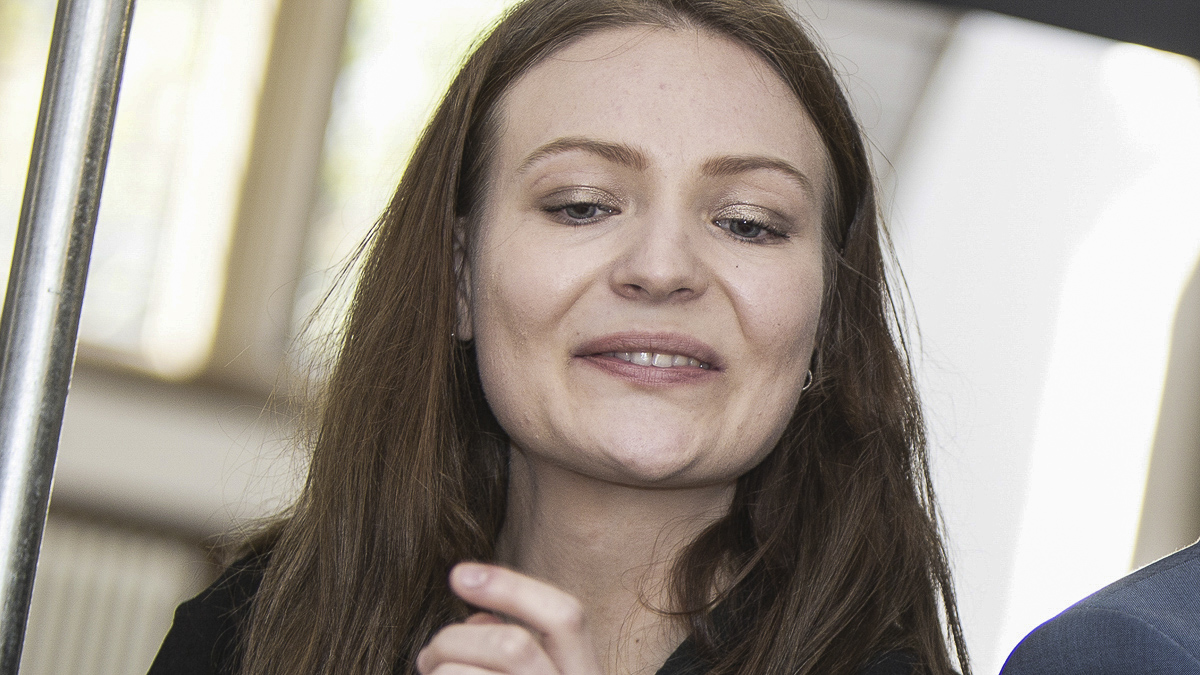On graduating from his Part 1 studies in 2019, Adam was offered his dream job at AndArchitects, a sports specialist firm with a diverse portfolio. They supported his decision to study for his Part 2 Master of Architecture and accommodated his wish to work in practice alongside his studies. Reading was Adam’s natural choice.
His decision to return to Reading was influenced not only by the strong relationships built between staff and peers, but also by the connections and approach that the School of Architecture has with industry, which he praises as part of the School’s supportive and professional atmosphere.
Another aspect of his master’s that Adam appreciated was his experience working as an undergraduate support assistant, which formed part of his Professional Skills module.
“It was invaluable in building relationships and connections across all year groups within the School of Architecture. It was a really rewarding experience and gaining a different type of professional experience.”
